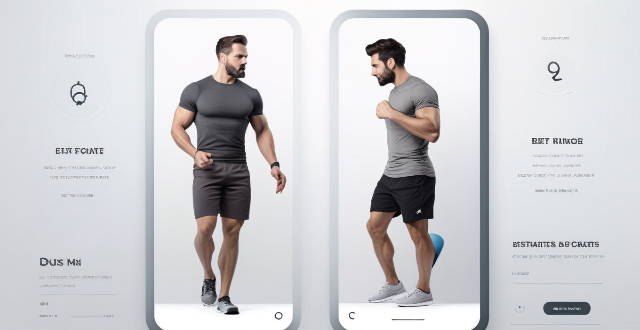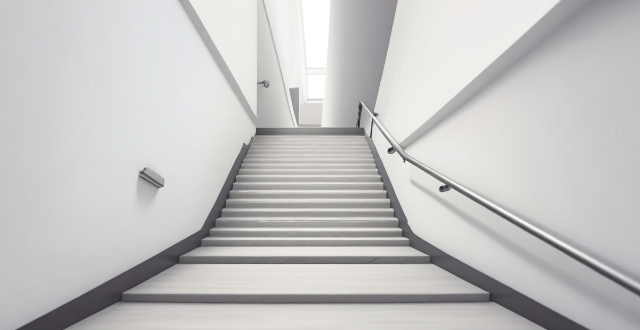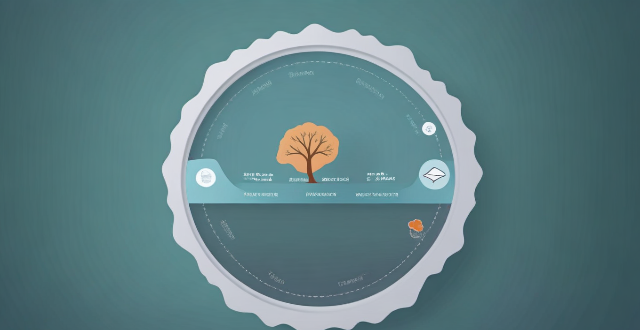Comfort Step

How important is it to step outside of my comfort zone for creativity growth ?
The Significance of Exiting Your Comfort Zone for Creative Growth Stepping outside of one's comfort zone is often touted as a crucial element in personal development, especially when it comes to fostering creativity. This process involves venturing into unfamiliar situations or adopting new perspectives that can be initially challenging but ultimately rewarding. In the context of creativity growth, this approach is particularly important. Why Step Out of Your Comfort Zone? Encourages New Ideas - Exposure to Diverse Experiences: Interacting with different people and environments introduces you to new ideas and ways of thinking. - Increased Flexibility: Engaging in unfamiliar activities enhances your ability to adapt and think creatively. Promotes Problem-Solving Skills - Facing Challenges: Tackling obstacles outside your comfort zone builds resilience and improves your problem-solving abilities. - Learning from Failure: Making mistakes in new contexts provides valuable lessons that fuel creative solutions. Boosts Confidence - Overcoming Fears: Conquering fears associated with new experiences can significantly boost your self-assurance. - Expanding Capabilities: As you successfully navigate unfamiliar situations, you realize your potential and become more confident in your abilities. Practical Steps to Step Out of Your Comfort Zone Try New Things - Take Up a Hobby: Start an activity you've always been curious about but never tried before. - Travel Somewhere Unfamiliar: Visit a new place where the culture, language, or landscape differs from what you're used to. Challenge Yourself - Set Ambitious Goals: Create objectives that push you beyond what you believe you are capable of achieving. - Public Performance: Perform a task in public that you normally do privately, like speaking or playing an instrument. Embrace Uncertainty - Let Go of Control: Allow events to unfold without trying to micromanage every aspect. - Open-Ended Projects: Work on projects without a clear outcome, encouraging improvisation and adaptability. Conclusion Exiting your comfort zone is not just important for creativity growth; it's essential. By embracing uncertainty, trying new things, and challenging yourself, you open the door to a wealth of creative opportunities. These experiences not only enrich your life but also expand your capacity for innovation and original thought. So, step out boldly—the rewards of leaving your comfort zone far outweigh the initial discomfort.

How do I make vegetarian versions of classic comfort foods ?
Vegetarian versions of classic comfort foods can be just as satisfying and delicious as their meat-based counterparts. Here are some tips on how to make vegetarian versions of classic comfort foods: 1. Start with a hearty base like lentils, beans, or tofu. 2. Add rich flavors like cheese, cream, or butter. 3. Use spices and herbs for depth and complexity. 4. Get creative with grains like rice, quinoa, or pasta. 5. Incorporate vegetables by roasting, sautéing, or adding raw to salads. 6. Try meat alternatives like plant-based burgers, sausages, and bacon. 7. Experiment with different cuisines for new and exciting ways to enjoy your favorite comfort foods without meat.

Is it possible to lower my monthly utility expenses without sacrificing comfort ?
Yes, it is definitely possible to reduce your monthly utility expenses without compromising your comfort. Here are some tips and strategies that you can implement: - **Energy-efficient appliances**: Replace old appliances with energy-efficient models to save on electricity bills. - **Thermostat settings**: Adjust your thermostat settings to save money on heating and cooling. - **Lighting**: Use LED bulbs to use less energy and last longer than traditional incandescent bulbs. - **Water usage**: Fix leaks to save on your water bill. - **Insulation**: Improve insulation to keep your home warm in winter and cool in summer, reducing the need for heating and cooling. - **Unplug electronics**: Unplug electronics when not in use to save on your electricity bill. - **Shop around**: Shop around for better deals on your utilities. - **Be mindful of usage**: Be aware of how much water, gas, and electricity you're using to identify areas where you can cut back.

Can you provide a step-by-step guide for making bread at home ?
This step-by-step guide provides a comprehensive process for making bread at home, detailing the ingredients and tools required, as well as each stage of the bread-making process from proofing the yeast to baking. It emphasizes the importance of technique in kneading and rising, offers optional tips for enhancing texture, and concludes with instructions on how to bake and enjoy the homemade bread.

Can you explain the step-by-step process of a celebrity's everyday makeup routine ?
Celebrities' everyday makeup routine includes cleansing, moisturizing, priming, foundation, concealer, eye makeup, blush and bronzer, highlighter, and lip makeup. This step-by-step process helps them achieve a flawless and glamorous look that enhances their natural beauty.

How do you combine style with comfort in your activewear ?
Combining style with comfort in activewear is possible by following these tips, including choosing the right fabric, investing in quality pieces, mixing and matching colors and patterns, accessorizing wisely, considering layering, and selecting appropriate footwear.

Can you provide a step-by-step guide on how to enable and use hidden features in iOS ?
## Step-by-Step Guide on How to Enable and Use Hidden Features in iOS Enabling and using hidden features in iOS can enhance your iPhone or iPad experience by providing access to advanced settings and experimental features. However, it's important to note that some of these features may not work as intended and could potentially cause issues with your device. Proceed with caution and make sure to back up your device before making any changes. ### Step 1: Back Up Your Device Before enabling any hidden features, it's crucial to back up your device to prevent data loss. You can do this by connecting your device to iTunes or using iCloud backup. ### Step 2: Jailbreak Your Device (Optional) Jailbreaking is the process of removing software restrictions imposed by Apple on iOS devices. It allows you to access and modify system files, which can enable additional hidden features. However, jailbreaking voids your warranty and can potentially harm your device. If you choose to jailbreak, proceed with caution and use a reliable source for instructions. ### Step 3: Install a Third-Party App Store (Optional) If you want to install apps with hidden features, you may need to install a third-party app store like Cydia or TweakBox. These app stores offer modified versions of apps with added functionality and customization options. Be aware that using third-party app stores can pose security risks and may violate Apple's terms of service. ### Step 4: Access the Settings App Open the Settings app on your iOS device to access the hidden features. ### Step 5: Navigate to the Hidden Features Section Scroll down and tap on "General" followed by "Accessibility." Here, you will find various accessibility options that can be enabled or disabled. Some of these options include: - **AssistiveTouch**: Adds an on-screen button that provides quick access to commonly used functions. - **Switch Control**: Allows you to control your device using external switches or buttons. - **Guided Access**: Limits access to certain areas of the screen or restricts certain features for a set period of time. ### Step 6: Enable Hidden Features To enable a hidden feature, simply toggle the switch next to it. Once enabled, you can customize the feature according to your preferences. ### Step 7: Customize the Hidden Features After enabling a hidden feature, you can customize its settings by tapping on it and adjusting the available options. For example, with AssistiveTouch enabled, you can change the size, color, and position of the on-screen button, as well as assign specific actions to it. ### Step 8: Test the Hidden Features Once you have customized the hidden features, test them out to ensure they are working as expected. Keep in mind that some features may not function properly or could cause issues with other apps or system functions. If you encounter any problems, disable the feature and try troubleshooting or seeking assistance from online forums or support resources. ### Step 9: Troubleshoot Issues (If Any) If you encounter any issues while using hidden features, try disabling them and restarting your device. If the problem persists, consider restoring your device from a backup or contacting Apple Support for further assistance.

How do I find cheap flights without sacrificing comfort ?
Finding cheap flights without sacrificing comfort is a challenge, but it's not impossible. Here are some tips to help you find the best deals on comfortable flights: Being flexible with your travel dates can make a significant difference in the price of your flight. Try to avoid peak travel times like holidays and weekends, as these tend to be the most expensive times to fly. Instead, aim to travel during off-peak times, such as midweek or early morning/late evening flights. Booking early can often get you the best deals, as airlines tend to increase prices closer to the departure date. However, if you're willing to take a risk, booking last minute can also yield some great savings. Just be prepared to compromise on your preferred flight time and seating arrangements. Flight aggregator websites like Skyscanner and Kayak allow you to compare prices across multiple airlines and find the cheapest options. These sites often have filters that allow you to prioritize factors like layover time, cabin class, and airline ratings, so you can find flights that meet your comfort requirements. Many airlines offer newsletters and loyalty programs that provide exclusive discounts and deals to subscribers. By signing up for these, you can stay informed about upcoming sales and promotions that may not be advertised elsewhere. If you live near multiple airports, consider flying out of an alternative airport instead of the main one. These smaller airports often have cheaper flights due to lower demand and fewer flight options. Just be sure to factor in the cost of transportation to and from the airport when comparing prices. Hidden city ticketing involves booking a flight with a layover at your desired destination instead of the final destination listed on the ticket. This can sometimes result in significant savings, but it's important to note that it's against most airline policies and can result in complications if discovered. If you're willing to pay a bit more for extra legroom and comfort, consider choosing economy plus seats. These seats are typically located near the front of the economy section and offer more space than standard economy seats. They're often available for a reasonable fee, especially if booked in advance. Packing light can save you money on baggage fees and make your trip more comfortable overall. Most airlines allow passengers to bring one carry-on bag and one personal item for free, so take advantage of this by packing only the essentials and avoiding overweight baggage charges.

What are the best shoes for both style and performance in sports ?
The article discusses the best shoes for sports that offer both style and performance. It provides recommendations for running, basketball, and football shoes, considering factors such as comfort, support, durability, and aesthetics. The recommended shoes include Nike Air Zoom Pegasus 36, Adidas Ultraboost 21, Jordan 1 Retro High OG, Under Armour Curry 7, Nike Mercurial Vapor 13 Elite FG, and Adidas X Speedflow.1. These shoes are designed to provide optimal comfort and support while also offering stylish designs and color options.

How do I choose the right backpack for my needs ?
Choosing the right backpack involves considering factors like purpose, capacity, comfort, durability, organization, budget, and style. Determining why you need a backpack (school, hiking, commuting, sports) helps narrow down options. Capacity should match storage needs, from small (up to 20 liters) for light loads to large (35 liters and above) for extended journeys. Comfort is crucial; look for adjustable straps, ample padding, and even weight distribution. Durability depends on water resistance, tear resistance, and quality zippers/buckles. Organization features include multiple compartments, quick-access pockets, and internal frames. Budget considerations involve finding value, watching for sales, and checking warranties. Finally, personal style comes into play with color/design choices, brand loyalty, and whether to follow trends or timeless designs.

How has athleisure become a part of everyday fashion ?
Athleisure, blending "athletic" and "leisure," has become a staple in everyday fashion due to its comfort, health-conscious associations, technological advancements, economic accessibility, and sociocultural trends. Its popularity is driven by comfortable materials, versatile designs, the promotion of wellness, performance fabrics, fast fashion impact, and casualization of workplaces. Athleisure offers practicality and style, making it a go-to choice for many consumers.

What are the challenges faced by architects while designing a sports venue ?
Designing a sports venue is a complex process that involves various challenges. Architects need to consider factors like acoustics, lighting, seating capacity, sustainability, safety, functionality, technology integration, and budget constraints. They must balance reverberation time and background noise for optimal sound quality, ensure uniform lighting without causing discomfort to players, maximize sightlines and comfort for spectators, incorporate energy-efficient technologies and materials, plan for emergency access and crowd control, design multipurpose spaces with easy maintenance in mind, integrate advanced technology like scoreboards and Wi-Fi connectivity, and stay within budgetary limits while considering future upgrades or expansions. By addressing these challenges effectively, architects can create venues that provide an exceptional experience for both athletes and spectators.

How important is it to have a proper fitting helmet for mountain biking ?
Mountain biking requires a properly fitted helmet for safety, comfort, and efficiency. A well-fitted helmet stays secure during crashes, aligns the visor correctly, and reduces discomfort, allowing for longer rides. It also minimizes distractions and optimizes weight distribution. To ensure a proper fit, measure your head, try multiple helmets, adjust the retention system, check for movement, wear it for a while, and consult professional advice.

How do I sell my cryptocurrency ?
This guide provides a step-by-step process for selling cryptocurrency, emphasizing the importance of security, fees, user interface, and supported currencies. It outlines steps such as choosing a reputable exchange or trading platform, creating an account, verifying identity, linking a payment method, transferring crypto to the exchange, placing a sell order, confirming the trade, and securing assets. The text also includes tips on tax implications and consulting a financial advisor.

How do I choose the right local experience activity for me ?
Choosing the right local experience activity requires careful consideration of your interests, research, recommendations, safety, and comfort levels. Here are some tips to help you make an informed decision: 1. Identify your interests and preferences before choosing a local experience activity. 2. Research local options that align with your interests and consider factors such as location, duration, cost, availability, and language barriers. 3. Read reviews from previous participants and ask for recommendations from friends or family who have visited the destination before. 4. Ensure that the activity meets your safety and comfort levels, taking into account any health concerns or physical limitations. 5. Book in advance to secure your spot and plan your itinerary accordingly. By following these steps, you can find an enjoyable and memorable experience that suits your preferences while exploring a new destination.

How do I troubleshoot and repair a malfunctioning thermostat in my home ?
This text provides a step-by-step guide on how to troubleshoot and repair a malfunctioning thermostat in your home. It starts by checking the batteries, then moves on to checking the wiring connections, ensuring the thermostat is set to the correct temperature, making sure there are no obstructions blocking the airflow around the thermostat, cleaning the thermostat, testing it by turning it off and on again, and finally considering replacing the thermostat altogether if none of the previous steps work. The text emphasizes the importance of consulting a professional if you are uncomfortable working with electrical components.

What is the ideal cadence (steps per minute) for efficient running ?
The ideal cadence for efficient running varies based on individual factors but generally falls within a range of 160 to 180 steps per minute. A higher cadence can reduce impact forces, improve running economy, and enhance coordination. Beginners may start with a lower cadence and gradually increase it, while experienced runners may experiment within the recommended range. Measuring cadence involves timing a chosen distance and counting steps, then calculating steps per minute. Tips for increasing cadence include shortening stride length, focusing on quick feet, using a metronome app, and practicing on a treadmill.

How do I set up parental controls on my child's Apple device ?
The text provides a step-by-step guide on how to set up parental controls on an Apple device for children. The steps include creating a family group, turning on Screen Time, setting up content and privacy restrictions, establishing downtime and app limits, and monitoring the child's device usage. The purpose of these steps is to ensure the child's safety and well-being while using technology by controlling what apps, websites, and features they can access, as well as when and how much they can use their device.

What is the process of vaccine allocation ?
Vaccine allocation is a crucial step in the fight against infectious diseases, such as COVID-19. It involves distributing vaccines to those who need them most, ensuring equitable access and maximizing public health benefits. The process includes determining priorities, identifying supply sources, allocating doses, distributing vaccines, and administration and tracking. By following these steps, we can ensure that vaccines are distributed equitably and effectively, helping to control the spread of infectious diseases and protect public health.

How can I identify the sources of my stress and address them ?
Identifying and addressing the sources of stress is essential for maintaining good health and well-being. The first step is to identify the sources of stress through journaling, reflecting on daily routines, and asking for feedback from others. Once identified, strategies such as prioritizing self-care, setting boundaries, practicing mindfulness, seeking support, and considering therapy can be implemented to address the stressors. By following these steps, individuals can effectively manage their stress and improve their overall well-being.

How do I make a traditional Indian curry at home ?
How to Make a Traditional Indian Curry at Home Indian curry is a flavorful and aromatic dish that can be made with various vegetables, meats, or legumes. Here's a step-by-step guide to making a traditional Indian curry at home: Ingredients: - 2 tablespoons vegetable oil - 1 onion, finely chopped - 2 garlic cloves, minced - 1 tablespoon grated fresh ginger - 2 teaspoons ground cumin - 1 teaspoon ground coriander - 1 teaspoon turmeric powder - 1 teaspoon paprika - 1 teaspoon salt - 1 can (14 ounces) diced tomatoes - 1 can (14 ounces) coconut milk - 1 pound chicken breasts or thighs, cut into bite-sized pieces - Fresh cilantro leaves, chopped (optional) Instructions: Step 1: Heat the Oil Heat the vegetable oil in a large skillet over medium heat. Step 2: Sauté the Onion Add the chopped onion to the skillet and cook until it becomes translucent, stirring occasionally. This should take about 5 minutes. Step 3: Add Garlic and Ginger Stir in the minced garlic and grated ginger and cook for another minute until fragrant. Step 4: Add Spices Add the ground cumin, ground coriander, turmeric powder, paprika, and salt to the skillet. Stir well to combine with the onion mixture. Cook for about 30 seconds until the spices are fragrant. Step 5: Add Tomatoes and Coconut Milk Pour in the can of diced tomatoes and coconut milk into the skillet. Stir well to combine all the ingredients. Bring the mixture to a simmer. Step 6: Add Chicken Add the bite-sized pieces of chicken to the skillet. Stir well to coat the chicken with the sauce. Cover the skillet with a lid and let it simmer for about 20 minutes or until the chicken is cooked through. Step 7: Garnish with Cilantro (Optional) Once the chicken is cooked, remove the skillet from heat and sprinkle some fresh cilantro leaves on top of the curry if desired. Your traditional Indian curry is now ready to serve! Enjoy it with rice or naan bread for a complete meal.

How do I approach complex math problems and find solutions ?
When facing complex math problems, it's essential to have a systematic approach that helps you break down the problem into manageable parts. Here's a structured way to tackle such challenges: 1. Understand the Problem: Read the problem carefully and identify key information and variables. Clarify any doubts or ambiguities before proceeding. 2. Plan Your Approach: Select an appropriate strategy based on the type of problem (algebraic, geometric, etc.). Outline the steps you will take to solve the problem and estimate the difficulty and time required for each step. 3. Execute Your Plan: Start with the first step of your plan, work through each step methodically, making sure each calculation is correct. Use scratch paper to keep your work organized. 4. Review Your Work: Re-read the original problem to ensure your solution addresses what was asked. Verify your answer makes sense in the context of the problem and double-check your calculations for accuracy. 5. Seek Help if Needed: If you are stuck, try approaching the problem from a different angle. Discuss the problem with peers or a teacher to get new insights. Utilize online resources or textbooks for additional explanations and examples.

How can I repair a hole in the wall without professional help ?
Repairing a hole in the wall can be done without professional help with the right tools and techniques. This step-by-step guide includes materials needed, cleaning and prepping the area, applying spackling paste, sanding the area, applying primer, painting the area, removing tape and cleaning up. Following these simple steps will result in a successfully repaired hole in the wall.

How do I apply a coupon code to my online purchase ?
Applying a coupon code to your online purchase is easy and can save you money. Here's a step-by-step guide on how to do it: Step 1: Find the Coupon Code First, find the coupon code on the retailer's website or through third-party coupon websites. Make sure to copy the code exactly as it appears. Step 2: Add Items to Your Cart Next, add the items you want to purchase to your cart and proceed to checkout. Step 3: Enter the Coupon Code During the checkout process, enter the coupon code in the designated box. Be careful with capitalization, check for expiration dates, and look for any restrictions. If the code is valid, you should see the discount applied to your total. Step 4: Complete Your Purchase After applying the coupon code, complete the rest of the checkout process as usual, including entering your shipping and payment information. If the code doesn't work, double-check that you entered it correctly and that it hasn't expired or reached its usage limit. If you're still having trouble, contact the retailer's customer service for assistance.

What are some simple steps to fix a running toilet ?
This text provides a step-by-step guide on how to fix a running toilet, including identifying the problem, adjusting or replacing the flapper or tank ball, adjusting the float level, checking and adjusting the fill valve, testing the fix, and when to call a professional.